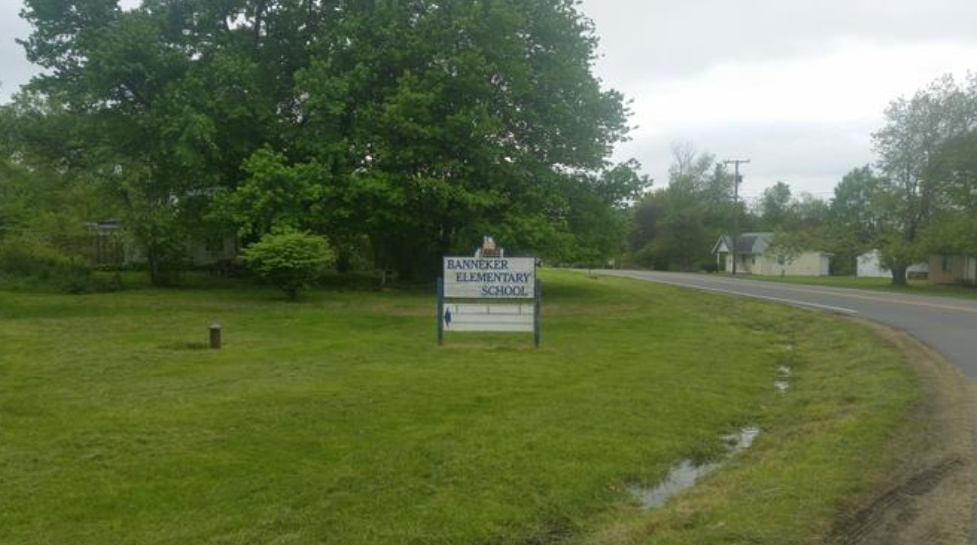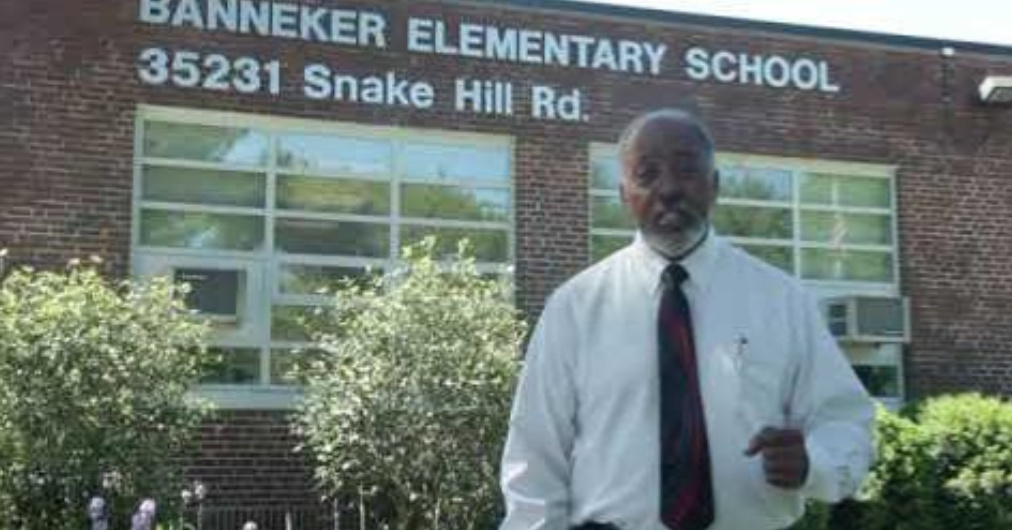Banneker Colored School
Edited 8/29/2023
Opening and Closing
1948: After integration in 1968, Banneker remains today as a functioning school. It is the only former Colored school still functioning as a school in the LCPS system.
Physical and Map Location
Despite the zip code being Middleburg, it is physically in the historically Black village of St. Louis. Address: 35231 Snake Hill Road, Middleburg (village of St. Louis).
Petitions
In 1944, the parents, under the leadership of Dr. Maurice Edmead of Middleburg, asked the school board to relieve them of the overcrowded situation. This would eventually lead to the decision to build Banneker. In fact, a number of petitions spoke of the over crowded situations in both the Grant school in Middleburg and the Saint Louis Colored school. This all led to building Banneker.
2.5.A Yr. 1930 to 1935 Please Expand Saint Louis Colored School
2.5.A Yr. 1931 Feb 9 Laura Cook asks for an additional room and teacher at Saint Louis.
2.5.A Yr. 1931 Feb 10. Saint Louis is too Crowded.
2.5.A Yr. 1932 Jan 21 Saint Louis Road needs improvement.
2.5.A Yr. 1944 Nov 16 Raby to Emerick on Buses and need to expand Middleburg.
2.5.A Yr. 1944 Dec 5 Raby says St. louis needs new school.
2.5.A Yr. 1946 Feb 6. Requesting Macville Venue For details on MacVille, see the vertical files in the Edwin Washington Archives at the Douglass HS building in Leesburg.
Transportation
A video for the Edwin Washington Project, narrated by Nathan Bailey. Walking was a common method of school transportation even before the creation of Loudoun County Public Schools (LCPS). It’s believed that students who lived within 3 miles of a school could walk from their home to school. The figure at https://edwinwashingtonproject.org/admin/item/31111 shows the location of the school with a circle representing the area from which students could have walked, back and forth from their home to the school. Travel by horse was also used and could have extended the travel distance.
History
See History of Banneker School Begun 1948. See also "Why Did We Lost So Much in 44 Years?" by Johnnie T. Smith in The Middleburg Mystique: A Peek inside the gates of Middleburg, Va. by Vicki Moon, Capital Books, July 2002. (pp 71)
For many years, the two-room Black school in Middleburg (Grant) and the one-room school in St. Louis had overcrowded conditions. Often Grant had an enrollment of over 100, and the St. Louis school ranged from sixty to seventy-two. To relieve the situation, Mr. Eli P. Howard Sr. sold the lot which became Banneker to Mr. William Benton of Middleburg on October 20, 1945. (Later, Mr. Howard in 1955 realized he intended to retire and asked to build a portion of the Banneker site to construct a retirement home for himself. See EWP 9.1 Yr. 1955 Howard on Banneker It contains the request by Eli Howard of Pelham, NY to purchase back from LCPS some unused land he had sold to Mr. Benton for the Banneker. He intended to retire soon and wanted to buy an unused portion of the property. I have not researched what became of his request, except that Emerick promised to take it with the School Board on Aug 8. It actually was not considered until the meeting of October 10. The decision was if not more than 9 acres, would consider an offer. See item 7, EWP 2.2 1955 10-10 School Brd Agenda and Minutes.
After Banneker Elementary School was opened in 1948, the Grant School location became the Marshall Street Community Center for recreation, entertainment, and education
In 1944, the parents, under the leadership of Dr. Maurice Edmead of Middleburg, asked the school board to relieve them of overcrowding. Dr. Maurice Edmead had a medical practice in Middleburg from 1933 to 1952. After that he moved to Washington, DC where he continued his practice, calling as clients many from Middleburg. Source: “Why Did We Lost So Much in 44 Years?” by Johnnie T. Smith in The Middleburg Mystique: A Peek inside the gates of Middleburg, Va. by Vicki Moon, Capital Books, July, 2002. (pp 71)
See in particular a letter by famed civil rights attorney James H. Raby on this matter, dated November 16, 1944.
After several years, the school board decided to purchase 19 acres of land in St. Louis, which is located six miles west of Middleburg.
Johnnie T. Smith became a citizen of Middleburg in 1938. When Banneker was created, he raised funds for the refrigerator, the stove, and kitchen. Source: “Why Did We Lost So Much in 44 Years?” by Johnnie T. Smith in The Middleburg Mystique: A Peek inside the gates of Middleburg, VA by Vicki Moon, Capital Books, July, 2002. (pp 71).
On March 31, 1948, the children and faculty of the Middleburg, St. Louis, and Mountville schools, with an approximate enrollment of 185 students, entered the beautiful brick building for the first time. Only five rooms were used as classrooms. A few years later the children from Bull Run School in Aldie were admitted to Banneker. When the enrollment increased the school board added three more classrooms, enlarged the kitchen, and converted a classroom to an office. In 1960, Willisville School was closed and the children were transported to Banneker. The enrollment increased again, and five more classrooms were added. Note: Although the article being quoted says 1960, actually Willisville was sold at public action April 5, 1959. Source: Poster for Public Action, School Box #2, Archives of the Circuit Court of Loudoun, Leesburg.)
The school was named for the famous Benjamin Banneker who constructed the first clock made entirely in America in 1753, and who was part of the surveying team who laid out the city of Washington, DC, in 1791. When the school was integrated in September 1968, the school board wanted to change the name from Banneker to Mercer, but the St. Louis community asked the board to keep the Banneker name. After due deliberation, the board decided to keep the original name.
1953, Nov 3. Banneker received globes, maps for the US and a world map.
In 1955/56, the President of the PTA was Mr. Curley Wanzer of Middleburg. Source: 4.9 Yr 1955/56 PTA Presidents.
Instructor
Ethel Smith had a contract to teach at Banneker in 1962. Her salary that year was $5300 for the session of 10 monhts from Aug 29, 1962 .
Insurance and Physical Description
Was built as a fireproof building consisting of six classrooms, a multi-purpose room, a clinic, and a kitchen. The classrooms were furnished with used desks, a teacher’s desk, and tables. The P.T.A., with the help of some benevolent friends, equipped the kitchen and the multi-purpose room.

